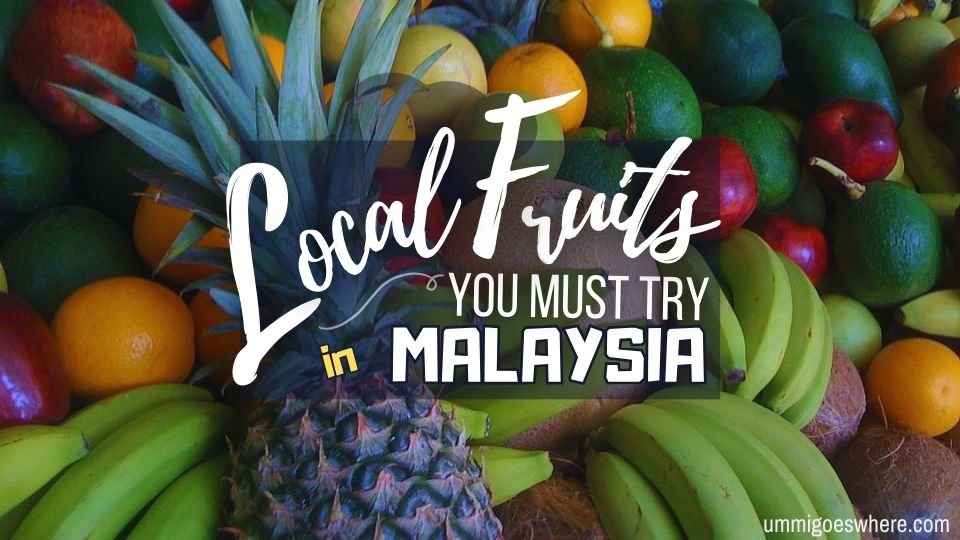Top 10 Local Fruits to Try in Malaysia

Malaysia’s tropical climate nurtures a vibrant range of local fruits that are as diverse and colorful as the country’s cultures. Whether you’re visiting a bustling city or exploring a rural village, sampling Malaysian local fruits is a sensory journey filled with flavor, aroma, and tradition. Here are the top 10 local fruits to try in Malaysia—from the famous to the rare.
1. Durian – The King of Fruits
Keyword Use: durian Malaysia, king of fruits
Love it or loathe it, durian is Malaysia’s most iconic fruit. Its strong aroma is matched by a rich, custard-like texture that’s adored by locals. Popular varieties include Musang King, XO, and D24.
Best Season: June–August
Where to Try: Jalan Alor (KL), SS2 Durian Hub (Petaling Jaya), Pasar Malam
Travel Tip: Eat with gloves or drink saltwater from the husk to reduce the smell.
2. Mangosteen – The Queen of Fruits
Keyword Use: mangosteen Malaysia, tropical fruits
Known as the “queen” to durian’s “king,” mangosteen is beloved for its soft, juicy white flesh and sweet-sour taste. It’s perfect for cooling down after eating heaty fruits like durian.
Best Season: May–September
Where to Try: Cameron Highlands, Pahang fruit markets
Tip: Choose fruits with a green, fresh stem—those are the ripest!
3. Rambutan – Hairy but Heavenly
Keyword Use: rambutan fruit Malaysia
Covered in red or yellow hair-like spikes, rambutan is juicy, mildly sweet, and often compared to lychee. Easy to peel and eat on the go.
Best Season: June–August, November–January
Where to Try: Roadside fruit stalls, rural orchards
Fun Fact: “Rambut” means hair in Malay.
4. Langsat – A Tangy Tropical Treat
Keyword Use: langsat Malaysia
Small and yellowish with slightly bitter latex under the skin, langsat has a citrusy sweetness once peeled. It’s a staple in East Coast states.
Best Season: July–September
Where to Try: Kelantan, Terengganu, village markets
Tip: Peel gently to avoid bitter sap from the skin.
5. Ciku (Sapodilla) – Nature’s Brown Sugar
Keyword Use: ciku fruit Malaysia, sapodilla
Brown, rough-skinned ciku has soft, grainy flesh that tastes like brown sugar or caramel. A hidden gem among Malaysian fruits.
Best Season: March–May
Where to Try: Traditional markets, night bazaars
Tip: The softer the fruit, the sweeter the taste.
6. Jambu Air (Water Apple) – Crisp and Juicy
Keyword Use: jambu air Malaysia, rose apple
Light, watery, and mildly sweet, jambu air is the ultimate hydrating snack. It’s often sold with asam boi (sour plum powder) for a tangy twist.
Best Season: Year-round (best: April–June)
Where to Try: Pasar Malam, local fruit vendors
Tip: Chill before eating for extra crunch!
7. Dokong – Sweet and Seedless
Keyword Use: dokong Malaysia fruit
Similar to langsat but sweeter and without the sticky sap, dokong is popular in rural areas and makes a great travel snack.
Best Season: June–August
Where to Try: Perak, Pahang roadside stalls
Tip: Press gently to peel open without squashing the flesh.
8. Pulasan – Rambutan’s Sweeter Cousin
Keyword Use: pulasan fruit Malaysia
Thicker skin and shorter hairs make pulasan easy to open. Its juicy flesh is sweeter than rambutan, and it’s considered rarer.
Best Season: June–August
Where to Try: Kedah, Perlis, and northern orchards
Tip: Twist the fruit to open cleanly.
9. Starfruit (Belimbing) – Vitamin C Booster
Keyword Use: starfruit Malaysia, belimbing
Star-shaped when sliced, belimbing is mildly sweet with a refreshing crunch. Popular as fresh juice or in salads.
Best Season: Year-round
Where to Try: Local fruit stalls, Selangor orchards
Health Tip: Great source of antioxidants and vitamin C.
10. Snake Fruit (Salak) – Bold and Zesty
Keyword Use: snake fruit Malaysia, salak fruit
With reddish-brown scaly skin, salak has a crunchy texture and bold taste—tangy, sweet, and slightly acidic. Found more in Borneo.
Best Season: April–June
Where to Try: Sabah & Sarawak markets
Tip: Peel with care—the scales can be sharp.
Bonus: Seasonal Fruit Tip
Check out Pasar Tani (farmers’ markets) or visit local fruit orchards in Penang, Perlis, or Johor for fresh, seasonal picks!
Final Thoughts: Why You Should Try Malaysian Local Fruits
Tasting Malaysian local fruits is more than just a culinary adventure—it’s a cultural experience. From the bold durian to the refreshing jambu air, every fruit tells a story of the land and its people. So go ahead, explore Malaysia’s colorful fruit stalls and orchards—you might just discover your new favorite fruit!







